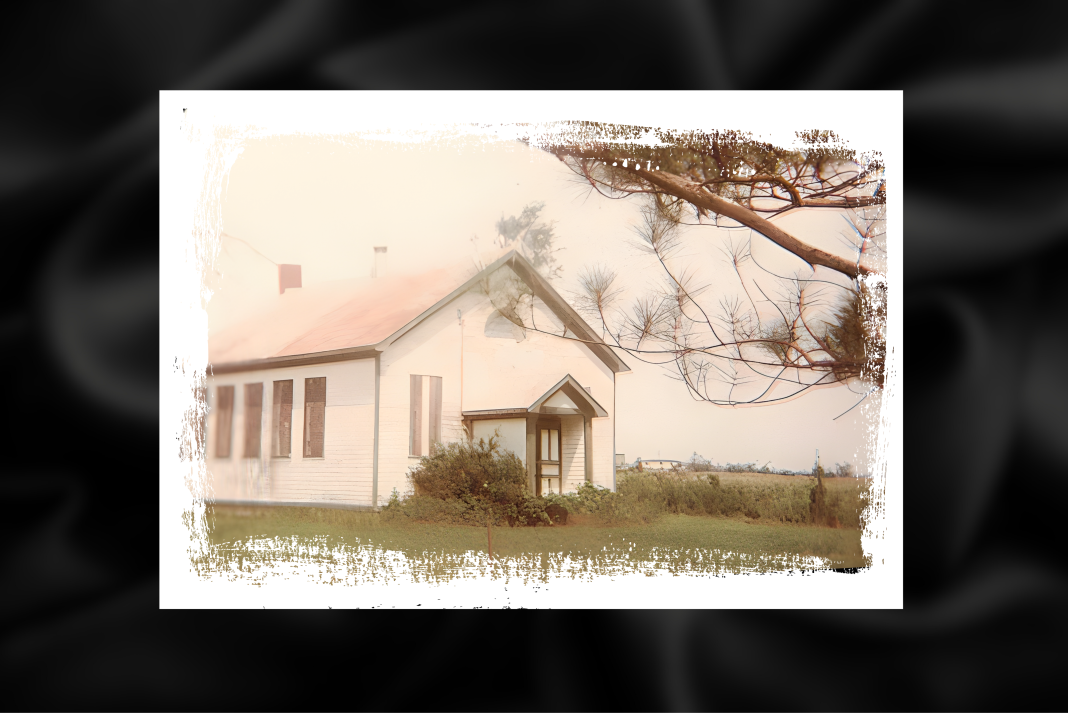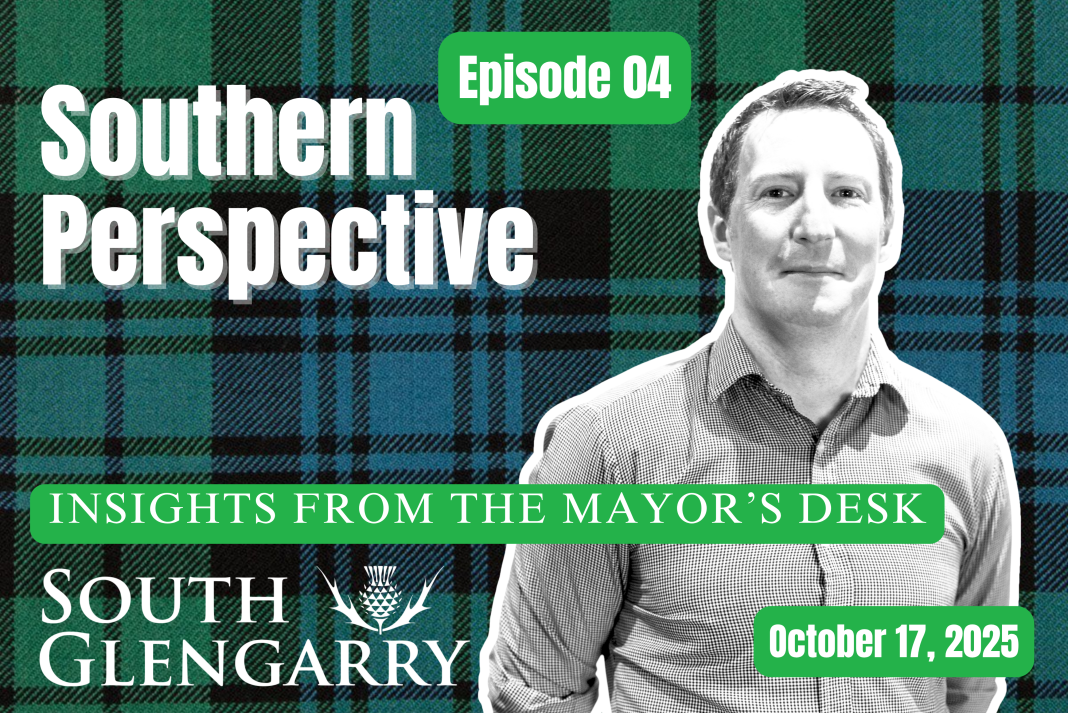Deer? What deer?
A few years ago, as the Dunvegan area began its inexorable descent into the dreariness of late fall, I wondered what autumn on a Kenyon farm was like seventy-five years or so ago. I assumed there must have been much to do to put things to bed for the winter, so I consulted my late friend Ken McEwen from Blackburn Hamlet. During the 1930s and 40s, Ken grew up in the 7th Concession on the lot that is now known as Fraserloch Farms.
He told me that, just like today’s kids, job number one in the fall was his education. This meant — from grade one to the start of high school — attending SS #4, the one-room schoolhouse a little ways down the road. As Ken recalls, “Our concept of time back then was different. When school year ended in the latter days of June, we didn’t even contemplate a return to classes. That was too, too, far off in the distant future.” In his early teen years, Ken’s help was needed with the filling and packing of their farm’s silo. Built in the summer of 1939 from hand mixed and poured concrete, the circular structure was 40 feet high, six feet of which were underground. It was used to store corn silage, which was made from the chopped up stalks, leaves and cobs of cow corn. When blown into a silo, the weight of the chopped corn mixture exerted a great deal of pressure and created an anaerobic, or oxygen-free, environment. The silage fermented for a week or so and produced a sweet, moist feed… a key part of their dairy herd’s daily ration. I’m not sure if the original concrete silo remains on Ken’s former family farm, but a similar one can be seen at the north end of Dunvegan’s Church Street. Leslie Clark’s lovely brick farmhouse and his dairy barn have been demolished, but the cement silo still stands proud.
“Corn blowing usually meant a day out of school,” Ken admitted, “as my Dad and I handled the distributor pipe and tramped the corn in the silo.” I gather from Ken that getting down from the silo after it had been filled well above the top was precarious, to say the least. Especially with boots that were slippery with corn juice. One slip in trying to reach an iron rung of the ladder built into the side of the silo would have meant a 34-foot fall to the hard ground below. Ken admits to having nightmares about that possibility. Ken’s dad needed the nutrient-rich corn silage because he had a contract with Borden’s Dairy and milked his herd year-round. He shipped his milk to the Borden’s site in Maxville six days a week. From there, it went by train to Montreal and was sold as fresh milk the following day. Farmers who sold their milk to one of the cheese factories across Glengarry — Baltics Corners, Dunvegan and Fiske’s Corners had factories, to name just a few — would let most of their cows “go dry” during the winter months when the factories were closed.
Ken recalls that his family would buy two 20 lb. wheels of cheese from a neighbour each fall, which would last them pretty well through the winter. “(The) cheese was kept on a stool in our cellar, so the mice or rats could not get at it,” Ken told me. “My Mom would cut out five pounds or so for the table, and my role… as a tad was to brush the cut with melted paraffin, to seal it.” Ken reported that another fall ritual was digging potatoes in the one-acre plot they would plant in their ‘new land.’ Any spuds not required for table use, “were chopped, sprinkled with grist and fed to cows… they loved them.” Ken admits that their so-called ‘new land,’ had been cleared of bush many decades before, but still retained the name.
“My Dad used to identify neighbourhood farms with reference to who owned them long before my time,” Ken told me. It’s a habit that all Gengarrians, old and newer, seem to fall into to. Depending on when the person to whom you’re speaking was born, the lot where Terry and I live home always be the Baxter place, the Jensen place, or perhaps even the McRae place, if you go way back. Fall also meant the start of hunting season, partridge in the bush, and ducks on the Scotch River. “My Mom covered them with summer savoury bread dressing liberally soaked with butter, great eating.” I noticed that Ken made no mention of deer hunting, so I asked him why. His response was basically: what deer? “Deer were not plentiful in my youth. If a deer track was seen (during a winter month), the news made the rounds of the hunting and trapping crowd.” The same was true over 45 years ago when Terry and I set up shop here. Ground hogs galore, but no deer. They, and the damn ticks that accompanied them, are a relatively recent development.
Ken’s family didn’t raise pigs, at least officially. Their contract with Borden’s stipulated that swine had to be kept a hundred feet from any milk production. Truth be told though, they did raise the odd pig on the QT, and slaughtered it when the weather turned cold. Come fall, they also butchered a head of beef from time to time. “Pork and beef roasts were wrapped in the heavy paper that parcels from Eaton’s and Simpson’s came in,” Ken reminisces. Back in his day, there were no freezers. So the packages of meat where stored in the granary, buried under the oats to insulate them from a January thaw. (Yes, they had them even back then.) He remembers coming home from school and his Mom asking him to go up in the granary and kick around through the grain, to locate a roast. “All sounds primitive, but it worked,” Ken confirmed. Another autumnal ritual was to see who would be the last kid to swim in the Scotch River before winter came. Conversely, in the spring, the Three Bridges Gang would see who would take the first swim of the year. “As a wee lad, it was right up there with who would be the first to go barefoot in the spring,” Ken wrote. But that’s a story for another day.
==============================================
PS: As I read these words almost five years after I first wrote them, it strikes me that Ken’s family ate very well and that cholesterol intake obviously wasn’t an issue. I only wish that Ken was with us still and that I could pepper him with more questions.
And Yes… this is NOT SS #4 but SS #1 … No photos exist of that school (unless someone has some)





